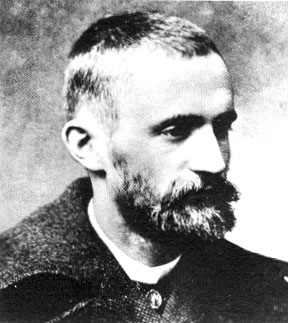George Eastman (1854-1932)
 Eastman wanted to make taking pictures popular. To
do this, he needed something lighter and safer than glass plate negatives used in the 1880s.
Eastman wanted to make taking pictures popular. To
do this, he needed something lighter and safer than glass plate negatives used in the 1880s.
His first solution was a paper film. In 1884 he introduced "negative paper" cameras. But these made poor quality photos and he replaced them with a hybrid paper/gelatin product he called "American Film."
In 1888 Eastman introduced the Kodak No. 1 camera. It cost $25 (about $780 in 2022 dollars) and came loaded to take 100 shots. Developing cost $10. Eastman sold about 5,200 Kodak 1 cameras.
Working with chemist Henry Reichenbach, Eastman produced the first celluloid film in 1889.
Eastman followed with a series of cheaper cameras. The Brownie, a $1 version was introduced in 1900. An additional $0.90 bought film and a kit to develop it and print pictures. It proved hugely popular. 245,000 were sold in under 2 years. Other models followed until 1982.


